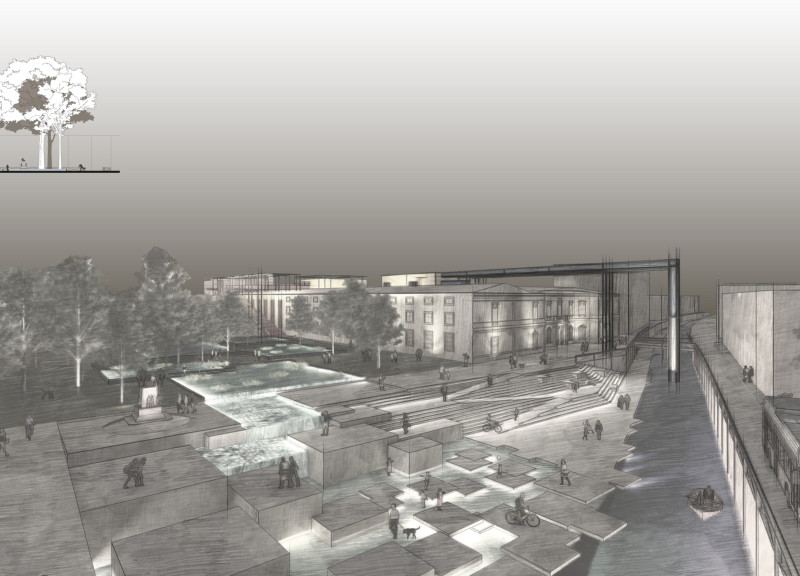5 key facts about this project
The "Ciclo della Cascata" project is an architectural initiative located in Milan, Italy, designed to illustrate a harmonious relationship between urban development and ecological systems. This project aims to integrate cooling strategies within the urban fabric, addressing climate challenges while enhancing the experience of public spaces. The concept revolves around using local resources to create a functional and aesthetically pleasing environment that promotes sustainability and community engagement.
The design incorporates a variety of features that support its functionality. Key elements include an intricate network of cooling devices aimed at regulating temperature and air quality throughout the urban area. The layout connects significant urban nodes with green spaces and water channels, facilitating mobility and enhancing social interaction. This connectivity is a central component of the project, creating pathways that encourage community use and environmental stewardship.
Sustainable building materials play a critical role in the construction of this project. The use of recycled materials and low-impact construction techniques aligns with the overarching goal of environmental responsibility. Furthermore, water-resistant surfaces are integrated into the design to ensure durability and support local biodiversity. The architectural plans illustrate various design elements, including terraces and public spaces that invite community activities and leisure.
A unique aspect of "Ciclo della Cascata" is its focus on integrating natural elements with architectural designs. Water cycle mechanisms are clearly defined in the plans, showcasing how water is collected, stored, and circulated through the urban landscape. This attribute not only enhances the ecological performance of the site but also revitalizes the historical connection between Milan and its waterways.
The project sets itself apart by merging innovative design with a deep understanding of local context. By doing so, it takes a holistic approach to urban ecology, addressing both environmental needs and community dynamics. The architectural sections emphasize the interplay between building forms and green infrastructure, creating a cohesive environment that responds well to climate challenges.
For a more comprehensive understanding of the "Ciclo della Cascata" project and its architectural design, we encourage you to explore the project's presentation, including the architectural plans and sections for deeper insights into the effective integration of architecture and ecology within this urban setting.






















































